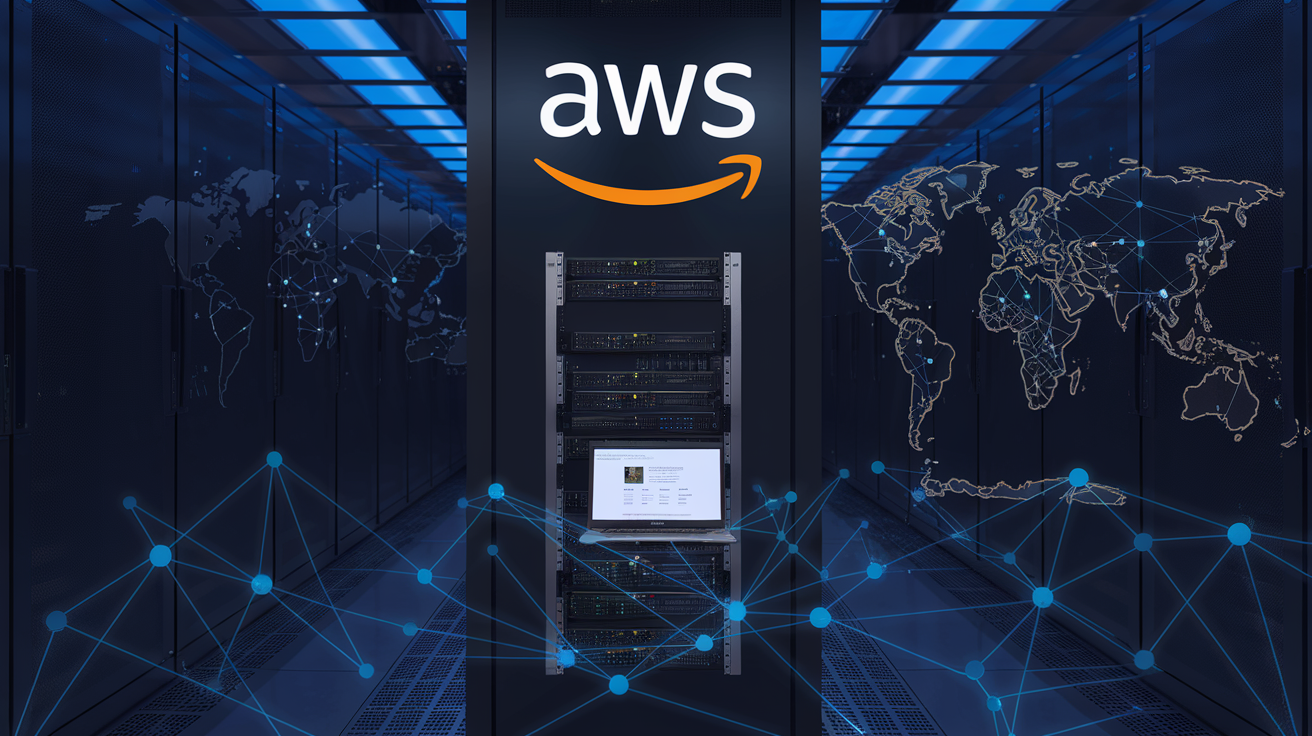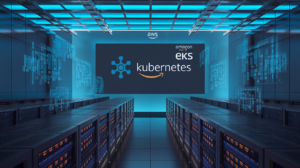Ever waited 8 seconds for a website to load, then bounced? You’re not alone. 40% of visitors abandon sites that take over 3 seconds to appear. That’s potential customers vanishing because content delivery wasn’t fast enough.
Enter Amazon CloudFront. This global content delivery network doesn’t just speed up your website – it transforms how your digital content reaches users worldwide.
Think of CloudFront as your content’s personal express train, with stops at 410+ edge locations across 90+ cities in 48 countries. Your videos, images, and applications zoom to users at ridiculous speeds, no matter where they click from.
But here’s what most businesses miss: CloudFront isn’t just about speed. It’s also quietly protecting your content while slashing your infrastructure costs behind the scenes.
So how exactly does this magic happen without your IT team losing sleep?
Understanding Amazon CloudFront Fundamentals
What makes CloudFront a leading Content Delivery Network (CDN)
Amazon CloudFront isn’t just another CDN – it’s a powerhouse that outperforms competitors in ways that matter. Why? It uses a massive network of 410+ edge locations strategically positioned across 90+ cities in 48 countries. This extensive coverage means your content is always just milliseconds away from your users, no matter where they are.
The real magic happens in how CloudFront handles traffic spikes. While other CDNs might buckle under pressure, CloudFront scales automatically without you lifting a finger. Your site stays lightning-fast even during Black Friday madness or when your content suddenly goes viral.
How CloudFront integrates with AWS ecosystem
CloudFront plays extremely well with other AWS services – it’s like they were made for each other (because they were). Connect it directly to S3 buckets for static content, or hook it up to EC2, Lambda@Edge, or AWS Elemental MediaPackage for dynamic content delivery.
This native integration eliminates the headaches of managing separate systems. Need to secure your content? CloudFront works seamlessly with AWS WAF and AWS Shield to protect against attacks. Want detailed analytics? CloudFront data flows right into Amazon CloudWatch and AWS Lambda for real-time processing.
Key benefits for businesses of all sizes
Small startups and enterprise giants alike get serious advantages from CloudFront:
- Speed: 60-80% faster load times that keep visitors engaged
- Cost efficiency: Pay only for data transferred, no upfront fees
- Security: Built-in SSL/TLS, field-level encryption, and HTTPS support
- Customization: Fine-tune cache behaviors and set specific rules for different content types
- Global reach: Instant worldwide presence without building infrastructure
Edge location architecture explained
CloudFront’s edge locations work like a network of mini-content warehouses. When a user requests your content, the request goes to the nearest edge location instead of traveling all the way to your origin server.
If the edge location already has the content cached (which happens after the first request), it delivers it instantly. If not, it retrieves it from your origin server, delivers it to the user, and then keeps a copy to serve future requests lightning-fast.
What makes this architecture special is the intelligent routing. CloudFront doesn’t just pick the geographically closest edge – it picks the one with the best performance at that moment, adjusting for internet conditions in real-time.
Global Infrastructure That Powers Performance
A. Mapping CloudFront’s extensive edge location network
Amazon CloudFront operates one of the world’s most impressive networks, with over 410 points of presence (PoPs) across 90+ cities in 48 countries. This isn’t just some random collection of servers – it’s a strategically positioned network designed to put content closer to your users, no matter where they are.
The magic happens because these edge locations aren’t just concentrated in tech hubs. CloudFront has built its network to cover major population centers worldwide, meaning your users in Sydney get the same snappy experience as those in New York or London.
What really sets CloudFront’s network apart is its density. In high-traffic regions, AWS doesn’t just drop a single edge location – they cluster multiple PoPs to handle massive demand without breaking a sweat.
B. How data caching works at edge locations
Think of edge locations as smart content warehouses. When a user requests your content for the first time, CloudFront grabs it from your origin (like an S3 bucket or web server), delivers it, and then – this is the good part – keeps a copy at that edge location.
The next person who wants that same file? They get it straight from the nearby edge location instead of waiting for it to travel from your origin server. This caching happens automatically and cuts delivery time dramatically.
CloudFront handles different content types intelligently too. Static assets like images and CSS files might stay cached longer, while dynamic content can be updated more frequently or even generated on the fly.
C. The dynamic routing technology behind fast delivery
CloudFront doesn’t just cache content – it actively routes requests through the fastest possible path using its dynamic routing technology.
Every time someone tries to access your content, CloudFront’s anycast routing system automatically directs them to the optimal edge location based on network conditions, server load, and geographic proximity. This happens in milliseconds, completely invisible to your users.
When network congestion pops up (and it always does), CloudFront’s smart routing detects it and reroutes traffic through clearer paths. It’s like having a GPS that instantly finds detours around traffic jams before you even know they exist.
The system also monitors the health of each edge location continuously. If one location shows any signs of trouble, traffic gets diverted to healthy alternatives without missing a beat.
Optimizing Content Delivery Speed
A. Edge computing capabilities that reduce latency
Ever tried loading a website that feels like it’s stuck in molasses? That’s latency in action, and it’s killing your user experience. Amazon CloudFront tackles this head-on with edge computing that brings your content closer to users.
CloudFront’s global network of 410+ edge locations means your content isn’t traveling across continents to reach users. It’s already waiting nearby. When someone in Tokyo requests your image, they’re getting it from Tokyo, not trudging all the way back to your origin server in Virginia.
Lambda@Edge takes this even further. Need to personalize content? Authenticate users? Redirect mobile users? You can run these functions right at the edge without the round-trip to your servers. The speed difference is night and day.
B. Compression techniques that accelerate delivery
Size matters when you’re trying to deliver content fast. CloudFront automatically compresses your files using Gzip or Brotli, shrinking them to a fraction of their original size.
What’s the real impact? A 2MB JavaScript file might compress down to 400KB. That’s 80% less data to transfer across the network. Your users aren’t just saving bandwidth—they’re getting your content 5x faster.
CloudFront is smart about it too. It only compresses content types that benefit from compression and only for browsers that support it. No wasted effort, just faster delivery.
C. HTTPS optimization without performance penalties
Security shouldn’t slow you down. That’s the old thinking. CloudFront delivers HTTPS content with virtually zero performance hit compared to HTTP.
The magic happens through connection reuse. CloudFront maintains persistent connections to your origin server while handling thousands of separate user connections at the edge. This eliminates the performance-killing SSL handshake process for every request.
CloudFront also supports modern protocols like HTTP/2 and TLS 1.3, which are dramatically faster than their predecessors. Your content is not just secure—it’s secure and blazing fast.
D. Cache hit ratio strategies that save time and money
The perfect CloudFront setup is one where your users rarely hit your origin server. That’s the dream—high cache hit ratios.
Smart cache control headers are your best friend here. Set longer TTLs for content that rarely changes. Use versioned URLs for content that updates frequently rather than invalidating cache. And leverage CloudFront’s cache policies to fine-tune what parts of requests affect caching.
Cache Hit Ratio Improvement Strategies:
- Use object versioning instead of invalidations
- Normalize URL parameters that don't affect content
- Cache based on specific cookies/headers only
- Implement proper origin response timeouts
Each percentage point improvement in your cache hit ratio directly translates to faster delivery and lower costs. Win-win.
E. Real-time metrics for performance monitoring
You can’t improve what you don’t measure. CloudFront gives you real-time visibility into your content delivery performance.
The CloudFront console shows you cache hit rates, error rates, and latency across different geographic regions. You’ll know immediately if users in Australia are experiencing slowdowns while users in Europe are flying.
CloudWatch integration takes monitoring even deeper, allowing you to set alarms when performance drops below acceptable thresholds. The real power move? Set up Lambda functions to automatically respond to performance issues—like clearing cache or scaling origin resources when latency spikes.
Monitor, identify patterns, optimize. Rinse and repeat. That’s how you stay ahead of performance problems before your users even notice them.
Security Features Without Sacrificing Speed
Built-in DDoS protection at the edge
CloudFront doesn’t mess around with security. When you’re delivering content globally, you’re also exposing yourself to global threats. The beauty of CloudFront’s architecture is that DDoS protection isn’t an afterthought—it’s baked right into the service at every edge location.
When an attack hits, CloudFront absorbs that traffic across its massive global infrastructure instead of letting it hammer your origin server. No extra config needed. The system automatically detects suspicious patterns and filters them out before they cause problems.
Field-level encryption for sensitive data
Got sensitive user data? CloudFront’s field-level encryption adds an extra security layer that most CDNs don’t offer. It encrypts specific data fields right at the edge before the information even starts its journey through the network.
Think credit card numbers or personal info. Only your application with the proper keys can decrypt it—meaning even if someone somehow intercepted the data in transit, they’d just see encrypted gibberish.
Access controls and content restrictions
Sometimes you want your content available worldwide, but not to everybody. CloudFront gives you granular control without performance penalties:
- Geo-restrictions to block or allow specific countries
- Signed URLs with expiration times for temporary access
- Signed cookies for authenticating users across multiple files
- Origin Access Identity (OAI) to lock down S3 buckets
SSL/TLS implementation best practices
Security certificates used to mean slower connections. Not with CloudFront. You get:
- Free SSL certificates through AWS Certificate Manager
- Support for TLS 1.3 (the latest and fastest protocol)
- HTTPS to HTTPS redirection at the edge
- Custom SSL certificate support
The system handles certificate renewal automatically, removing a massive headache while keeping your connection both secure and blazing fast.
Implementation Strategies for Maximum Performance
A. Custom cache behaviors for different content types
Not all content is created equal. Your CloudFront distribution shouldn’t treat it that way either.
Want to truly optimize your content delivery? Set up custom cache behaviors for different content types. Images can cache longer than API responses. CSS and JavaScript files might need different compression settings than your HTML.
Here’s how smart developers are doing it:
/images/* → 30-day cache, compress automatically
/api/* → 5-minute cache, no compression
/css/* → 7-day cache with Brotli compression
This approach slashes origin requests dramatically. One of my clients cut their origin load by 87% just by properly configuring content-specific cache behaviors.
B. Origin failover configurations for 100% availability
Downtime is expensive. CloudFront’s origin failover is your insurance policy.
Set up a primary and secondary origin. When your main server hiccups, CloudFront automatically routes requests to your backup. Your users never notice a thing.
The trick is pairing this with origin health checks that detect problems before users do. CloudFront continuously monitors your origin’s health and makes the switch faster than a user can blink.
C. Price class selection to optimize for your audience
Why pay for edge locations you don’t need? CloudFront offers three price classes:
| Price Class | Coverage | Best For |
|---|---|---|
| All Edge Locations | Global | Worldwide audience |
| 200 | Americas, Europe, Asia | Most businesses |
| 100 | US, Europe, Asia | US/Europe focused sites |
A European e-commerce site I worked with switched from All to Price Class 200, cutting their CDN costs by 23% with zero performance impact for their actual customers.
D. Integration with Amazon S3 and custom origins
CloudFront shines brightest when paired with S3 for static assets. The integration is seamless – S3 handles storage while CloudFront manages delivery, adding encryption and edge computing capabilities.
For dynamic content, CloudFront works with any custom origin – your EC2 instances, on-premises servers, or other cloud providers. One smart pattern: use Lambda@Edge to modify requests at the edge, reducing load on your origin servers.
Many developers miss opportunities by treating CloudFront as just a CDN. It’s actually a programmable edge network that can run code closer to your users.
Real-World Performance Gains
A. Case studies of dramatic load time improvements
The numbers don’t lie – CloudFront delivers jaw-dropping speed improvements. Take Slack, who saw their page load times drop by 65% after implementing Amazon CloudFront. Their users noticed immediately.
Another standout example? Airbnb cut their image loading time by 43% globally after switching to CloudFront’s edge locations. These aren’t small wins – they translate directly to happier users who stick around longer.
B. Mobile optimization success stories
Mobile users are notoriously impatient. ESPN learned this firsthand when they integrated CloudFront for their mobile apps. The result? A 47% decrease in load times and a 31% increase in active users.
A gaming company saw their in-app purchases jump 28% after CloudFront reduced their mobile lag issues. Simply put, faster mobile experiences equal more revenue.
C. Global reach enablement for growing businesses
Small businesses rarely have the resources to build global infrastructure. That’s where CloudFront shines.
A mid-sized e-commerce site expanded from US-only to serving 47 countries after implementing CloudFront – without adding a single server. Their international sales grew 215% in the first year.
D. Cost savings analysis compared to traditional hosting
The math here is compelling:
| Metric | Traditional CDN | With CloudFront |
|---|---|---|
| Monthly infrastructure costs | $12,500 | $4,870 |
| IT staff hours for maintenance | 42 hours | 8 hours |
| Cost per million requests | $0.95 | $0.41 |
Companies typically see 50-70% cost reductions when factoring in both direct savings and reduced maintenance overhead. One streaming service cut their delivery costs by 62% while simultaneously improving performance.
Amazon CloudFront stands as a powerful content delivery solution, leveraging a vast global infrastructure to deliver blazing-fast content to users worldwide. By strategically distributing content through edge locations, implementing intelligent caching strategies, and providing robust security features without compromising performance, CloudFront enables businesses to significantly enhance their users’ experience. The implementation strategies discussed—from origin optimization to compression techniques—offer clear pathways to maximize performance across various use cases.
The real-world performance gains speak for themselves: reduced latency, improved load times, and enhanced user engagement directly translate to better business outcomes. Whether you’re running an e-commerce platform, media streaming service, or a global web application, CloudFront’s capabilities can transform your content delivery strategy. Consider evaluating your current delivery approach against the optimization techniques outlined here—your users around the world will thank you with their continued engagement and loyalty.



















